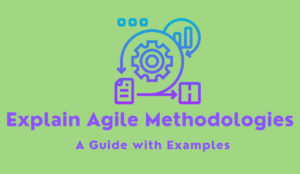In today’s interconnected digital landscape, Application Programming Interfaces (APIs) play a vital role in enabling seamless communication and integration between different software systems. Well-designed APIs are essential for developers to create robust applications, facilitate data exchange, and enhance user experiences. This blog post aims to provide a comprehensive guide on writing effective APIs in 2023, supported by practical examples and best practices.
- Understand Your Target Audience
Before diving into API development, it is crucial to understand your target audience and their needs. Consider the developers who will be consuming your API and the problem it aims to solve. This understanding will guide you in designing an API that is intuitive, user-friendly, and meets the requirements of your audience.
- Define Clear Goals and Use Cases
Clearly define the goals and use cases of your API. Determine what functionalities your API will offer and how it will be utilized. This step will help you establish a clear vision and ensure that your API addresses the specific needs of your users effectively.
- Design for Simplicity and Consistency
When designing APIs, simplicity and consistency should be the guiding principles. Keep the API design clean, intuitive, and easy to understand. Use descriptive names for resources, endpoints, and parameters, and adhere to consistent naming conventions throughout your API.
- Use Proper Versioning
APIs may change and develop over time. It is essential to implement proper versioning strategies to ensure backward compatibility and provide a smooth transition for existing consumers. Consider using version numbers in the URL or headers to differentiate between different versions of your API.
- Provide Clear and Concise Documentation
Documentation is a critical aspect of API development. Provide comprehensive, up-to-date, and easy-to-understand documentation that guides developers on how to consume your API effectively. Include examples, sample requests, and responses to demonstrate the usage of each endpoint and explain the expected behaviors.
- Authentication and Security
Implement robust authentication and security mechanisms to protect your API from unauthorized access and ensure data integrity. Consider using industry-standard protocols such as OAuth or JWT for authentication. Use HTTPS for secure data transmission, and implement proper authorization mechanisms to control access to sensitive resources.
- Error Handling and Response Codes
Handle errors gracefully and provide meaningful error messages to assist developers in troubleshooting. Utilize appropriate HTTP response codes to indicate the status of requests and responses. Consistently follow the HTTP standard for response codes, such as 200 for successful requests, 400 for client errors, and 500 for server errors.
- Consider Performance and Scalability
Optimize your API for performance and scalability to handle high volumes of requests efficiently. Employ techniques such as caching, pagination, and request throttling to improve response times and reduce server load. Continuously monitor and analyze API performance to identify and address bottlenecks promptly.
- Support Different Formats and Protocols
To cater to a broader range of developers and applications, support multiple data formats and protocols in your API. Consider offering JSON, XML, or even Protocol Buffers as options for data serialization. Additionally, support popular protocols such as REST, GraphQL, or WebSocket, depending on your use case and requirements.
- Implement Proper Testing
Thoroughly test your API before making it available to consumers. Use automated testing frameworks to validate endpoints, input validation, error handling, and edge cases. Additionally, consider implementing API monitoring and analytics to proactively identify and resolve potential issues.
Conclusion
Writing effective APIs requires careful planning, thoughtful design, and adherence to industry best practices. By understanding your target audience, defining clear goals, and following the guidelines provided in this blog post, you can create APIs that are intuitive, scalable, and provide a seamless experience for developers. Remember, a well-designed API can greatly enhance the value and usability of your software applications in today’s interconnected world.
By incorporating these practices and continually seeking feedback from your API consumers, you can refine and improve your APIs over time, ensuring their effectiveness and longevity in the ever-evolving digital landscape of 2023.




